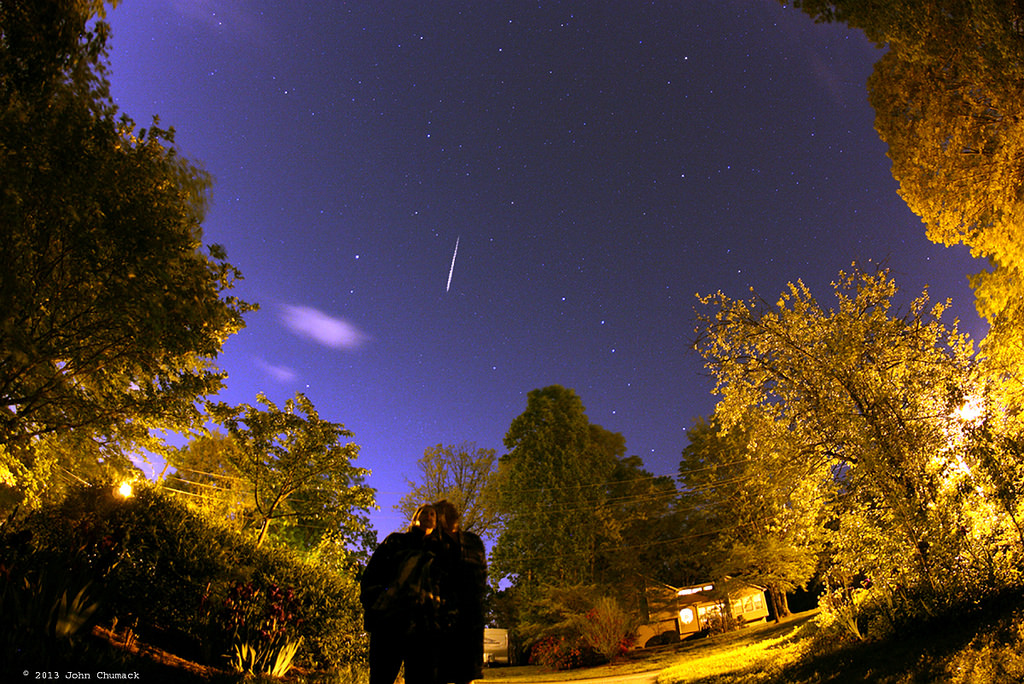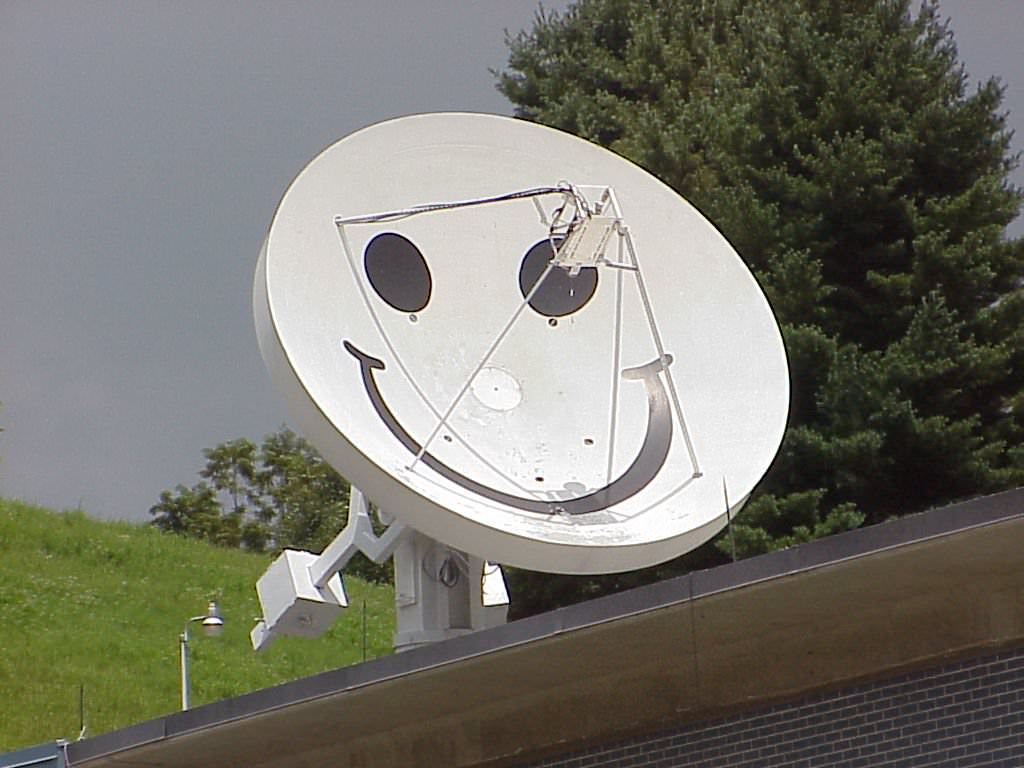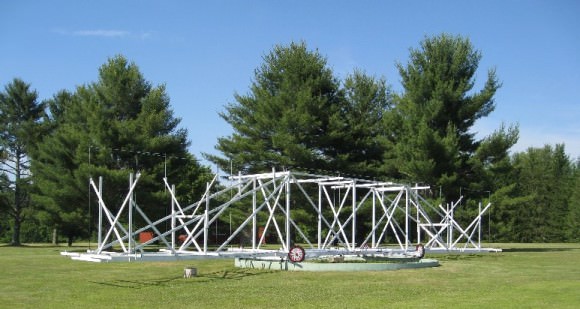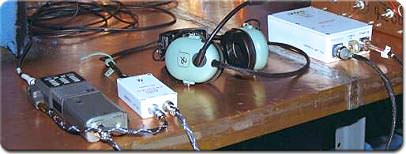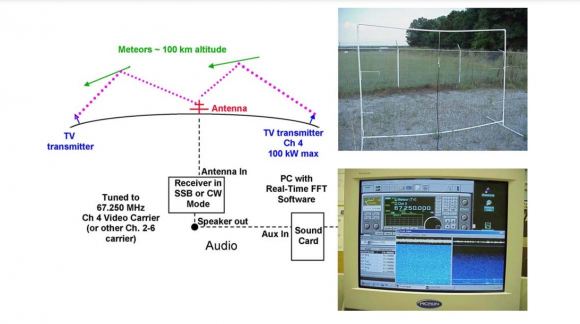April showers bring May flowers, and this month also brings a shower of the celestial variety, as the Lyrid meteors peak this week.
And the good news is, 2015 should be a favorable year for the first major meteor shower of the Spring season for the northern hemisphere. The peak for the shower in 2015 is predicted to arrive just after midnight Universal Time on Thursday April 23rd, which is 8:00 PM EDT on the evening of Wednesday April 22nd. This favors European longitudes right around the key time, though North America could be in for a decent show as well. Remember, meteor showers don’t read forecasts, and the actual peak can always arrive early or late. We plan to start watching tonight and into Wednesday and Thursday morning as well. April also sees a extremely variable level of cloud cover over the northern hemisphere, another reason to start your meteor vigil early on if skies are clear.
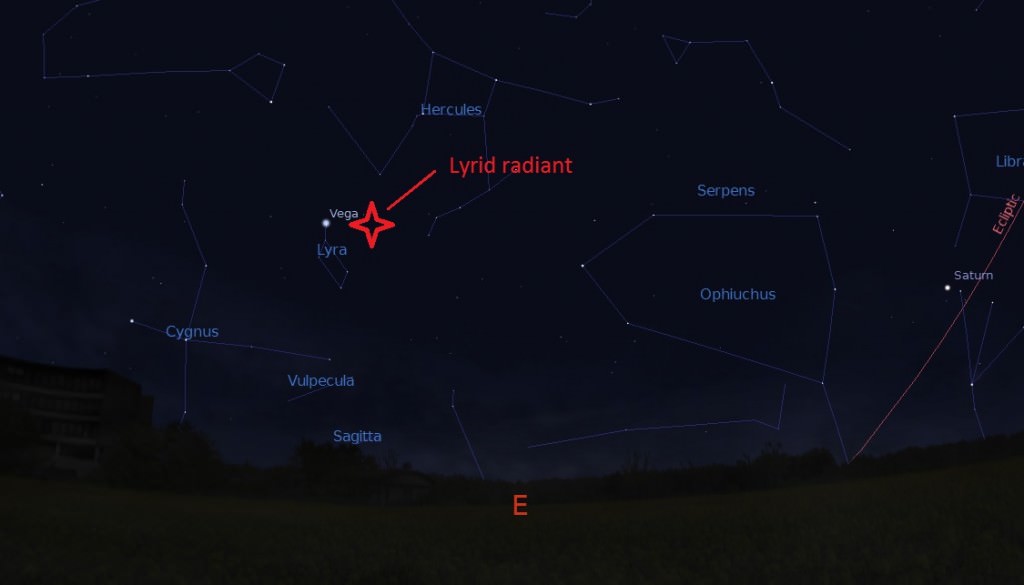
Another favorable factor this year is the phase of the Moon, which is only a slender 20% illuminated waxing crescent on Wednesday night. This means that it will have set well before local midnight when the action begins.
The source of the Lyrid meteors is Comet C/1861 G1 Thatcher, which is on a 415 year orbit and is expected to come back around again in 2276 A.D. 1861 actually sported two great comets, the other being C/1861 J1, also known as the Great Comet of 1861.
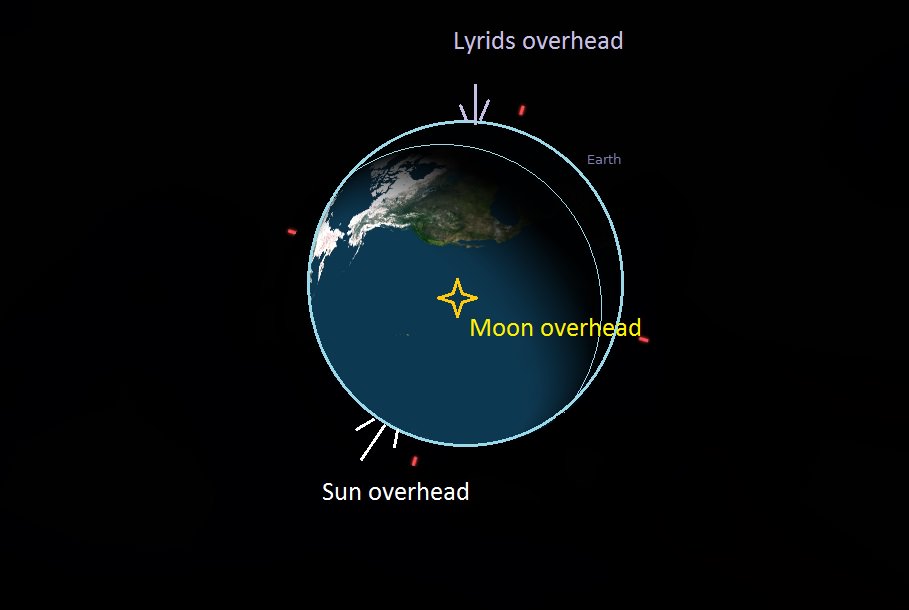
The Lyrids typically exhibit an ideal Zenithal Hourly Rate (ZHR) of 15-20 per hour, though this shower has been known to produce moderate outbursts from time to time. In 1803 and 1922, the Lyrids produced a ZHR of 100 per hour, and in recent times, we had an outburst of 250 per hour back in 1982. Researchers have tried over the years to tease out a periodicity for Lyrid outbursts, which seem erratic at best. In recent years, the Lyrids hit a ZHR of 20 (2011), 25 (2012), 22 (2013), and 16 last year in 2014.
Keep in mind, we say that the ZHR is an ideal rate, or what you could expect from the meteor shower with the radiant directly overhead under dark skies: expect the actual number of meteors observed during any shower to be significantly less.
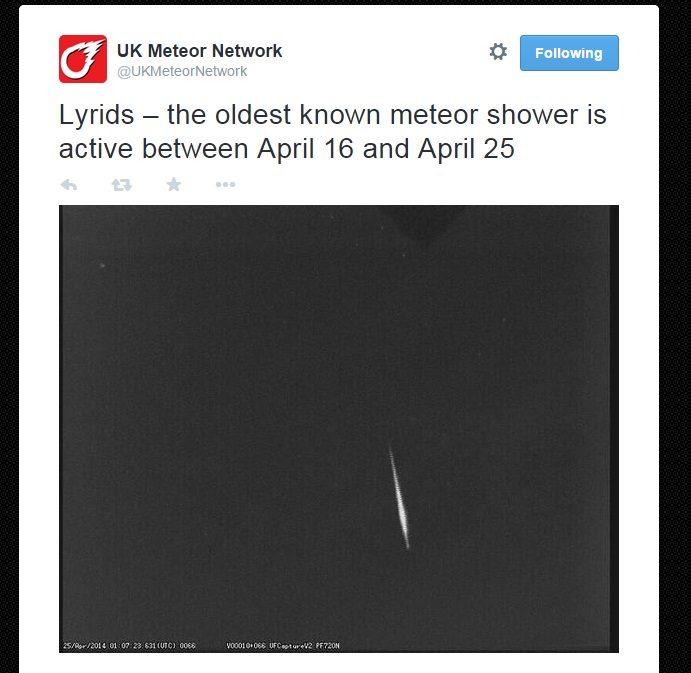
The radiant for the Lyrids actually sits a few degrees east of the bright star Vega across the Lyra border in the constellation Hercules. They should, in fact, be named the Herculids! In mid-April, the radiant for the April Lyrids has already risen well above the northeastern horizon as seen from latitude 40 degrees north at 10 PM local, and is roughly overhead by 4 AM local. Several other minor showers are also active around late April, including the Pi Puppids (April 24th), the Eta Aquarids (May 6th), and the Eta Lyrids (May 9th). The constellation of the Lyre also lends its name to the June Lyrids peaking around June 6th.
The April Lyrids are intersecting the Earth’s orbit at a high 80 degree angle at a swift velocity of 49 kilometres per second. About a quarter of the Lyrid meteors are fireballs, leaving bright, persistent smoke trains. It’s a good idea to keep a set of binoculars handy to study these lingering smoke trails post-passage.
The Lyrids also have the distinction of having the longest recorded history of any known meteor shower. Chinese chronicles indicate that “stars dropped down like rain,” on a late Spring night in 687 BC.
Observing a meteor shower requires nothing more than a set of working ‘Mark-1 eyeballs’ and patience. The International Meteor Organization always welcomes reports of meteor counts from observers worldwide to build an accurate picture of evolving meteor debris streams. You can even hear meteor ‘pings’ via FM radio.
Expect the rate to pick up past local midnight, as the Earth plows headlong into the oncoming meteor stream. Remember, the front of the car gets the love bugs, an apt analogy for any Florida resident in mid-April.
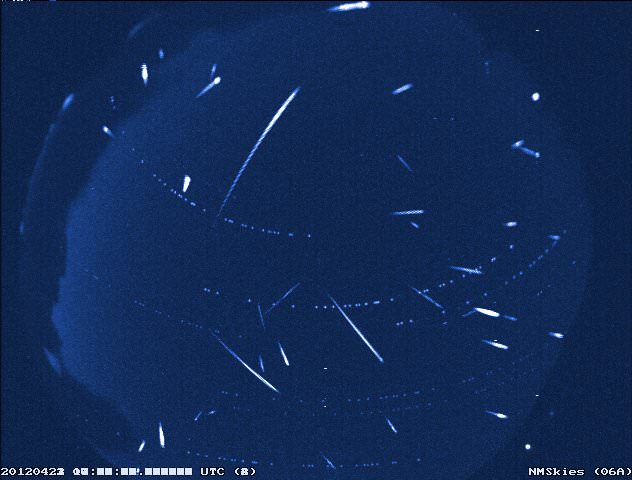
Catching a photograph of a Lyrid or any meteor is as simple as plopping a DSLR down on a tripod and doing a series of 30 second to several minute long time exposures. Use the widest field of view possible, and aim the camera off at about a 45 degree angle from the radiant to catch the meteors sidelong in profile. Be sure to take a series of test shots to get the ISO/f-stop combination set for the local sky conditions.
Don’t miss the 2015 Lyrids, possibly the first good meteor shower of the year!

